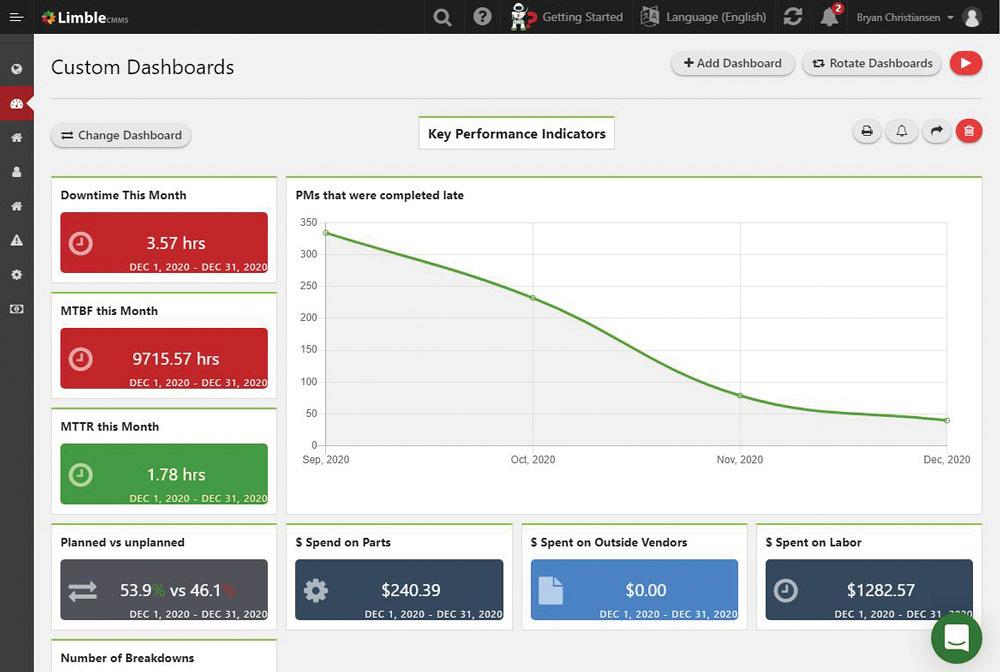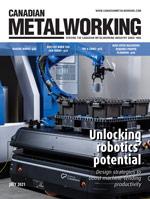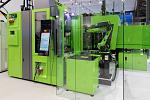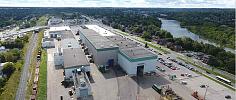Founder/CEO
- FMA
- The Fabricator
- FABTECH
- Canadian Metalworking
Using a computerized maintenance management system in manufacturing
Real-time data use takes maintenance management to the next level
- By Bryan Christiansen
- Updated May 18, 2023
- August 2, 2021
- Article
- Automation and Software

Dashboards provide maintenance managers with greater transparency and control over their team’s work and help them make important decisions about both short- and long-term maintenance strategies.
While real-time data availability is critical to statistical process control and QA in a manufacturing process, it is equally critical in optimal maintenance management of manufacturing plant and facility equipment.
Manufacturing industry pacesetters are increasingly using real-time data to identify, prioritize, and optimize their maintenance resources to address the right work at the right time. As opposed to manual logbook tracking and bulk information inputs, a real-time data stream facilitates consistent access to timely and accurate information and can benefit multiple workgroups across the value chain of maintenance, repair, and operations.
By having visibility of what is happening in real time with the machinery and equipment on-site, manufacturers can have better control over scheduled work, such as maintenance shutdowns, corrective maintenance, and proactive and condition-based maintenance, as well as reduce work churn and maximize production throughput metrics.
Computerized Maintenance System Work Prioritization
Availability of real-time maintenance backlog and deficiencies helps determine the priority of maintenance activities on a daily/weekly/monthly basis based on the operational and safety criticality of each equipment. Plant maintenance and operations leaders get a clear understanding of the priority of work and ensure optimal labour allocation by day and week.
Additionally, a real-time reflection of maintenance data helps manufacturers assess the readiness of work instantaneously and makes prioritization decisions easy. For example, you may be able to bring forward emergent critical work on a single point of vulnerability on your production conveyor system if the parts and resources are available and decide to postpone scheduled work on a piece of less critical equipment instead.
Asset Tracking with a Computerized Management Maintenance System
Real-time asset tracking has always proven to be challenging in large plants. Having a clear picture of equipment status at your disposal not only helps you understand the risk of redundancies, but it also helps determine the required permits to conduct work if lockout/tagout procedures have to be implemented.
Furthermore, new-build plants or plants undergoing major refurbishments and upgrades will find real-time asset tracking imperative as well because of its ability to check the in-service status of each piece of equipment as it gets commissioned or taken out of service for refurbishment. With a centralized computerized maintenance management system (CMMS) and proper equipment labelling system, plant managers can always be on top of their asset tracking process.
Regulatory Compliance
Depending on the exact industry, local, provincial, and federal regulations (as well as environmental, safety, and regulatory authority compliance) mandate the specific scope and time periods for certain asset maintenance.
This may include inspection and replacement of safety devices like overpressure protection equipment and conventional safety assets such as eyewash stations.
Because these regulations often are not a blanket requirement for every asset, and combined with the fact that assets may have different purchase or commissioning dates, it becomes quite challenging to adhere to the maintenance activities without an automated real-time system.
With a digital maintenance calendar, asset maintenance reminders are scheduled ahead of time to help ensure that the work and parts are scheduled and ready to go within the regulatory commitment date and uphold the safety culture within the organization as well.
Condition-based and Predictive Maintenance
Industry pacesetters establish a condition-based maintenance (CBM) or predictive maintenance (PdM) strategy that uses stored data to determine equipment health. Once data is captured in real time, manufacturers can implement a PdM program that enables them to optimize their existing planned maintenance efforts.
One of the drawbacks of traditional preventive maintenance (PM) is that all maintenance is scheduled on a set interval or frequency regardless of how frequently the equipment is used and its operating condition. For example, standby equipment or redundant training equipment that operates only when called upon may not have a predictable usage pattern like normal operational equipment. Therefore, rarely used equipment may end up receiving the same amount of maintenance as frequently used equipment under a traditional PM program. Additionally, equipment that is exposed to harsher operating conditions may end up being maintained as little as equipment that operates under ideal conditions with a fixed maintenance interval.
As a result, some equipment is maintained too often, thereby unnecessarily increasing maintenance costs, while other equipment suffers functional failure and unscheduled downtime waiting for its scheduled maintenance. This results in repair costs that could have been avoided, but more importantly ignores required maintenance activities that should have been performed earlier.
Plant operators and engineers can use real-time equipment data to understand the key measurable factors that influence their equipment performance and health. Because these factors can be measured and tracked, software applications can automatically monitor them and alert maintenance teams and generate work orders only when the equipment condition necessitates action through pre-set alerts on the CBM trigger parameters.
For example, one of the most commonly used CBM trigger parameters is equipment runtime or run hours. The CBM system can then be augmented by taking other equipment operating factors into account, such as vibration spectrum, temperature readings, flow rates, and other parameters.
Continuous Improvement and Technology Integration
A consolidated and continuously growing historical real-time data set supports continuous improvement by incorporating lessons learned about human performance as well as laying the foundation for implementing state-of-the-art AI technologies for asset management.
Machine learning-based AI optimization systems improve with the amount of data they have access to and optimize around prior observations.
Access to real-time maintenance data is the backbone for such functionality. Some of the AI-enabled maintenance management and optimization functionalities that are being adopted within the industry include work scheduling optimization, proactive/predictive maintenance trend analysis, and adverse equipment condition reporting.
Computerized Management Maintenance System Data Reporting
Another, often underappreciated benefit of a real-time maintenance management system is the ability to pull data from the software and generate predefined or custom reports, graphs, and dashboards with high levels of accuracy. Data visualization provides maintenance managers with greater transparency and control over their maintenance team’s work and helps them make important decisions around both short- and long-term maintenance strategies and address any adverse trends.
A CMMS can be used to get accurate historical and real-time data on plant assets and their required maintenance. Having a centralized cloud maintenance system means you have instant access to all maintenance information: work orders, billing and invoicing, reporting and analytics, inventory and asset management, and service history.
Real-time data use is one of the most powerful catalysts that is enabling greater manufacturing growth through optimizing maintenance management and asset reliability. By improving the quality of decisions, real-time data is helping manufacturers meet their diverse and demanding customer needs.
Bryan Christiansen is the founder/CEO of Limble CMMS, 3290 W. Mayflower Ave., Lehi, Utah 84043, 801-851-1218, www.limblecmms.com.
About the Author

subscribe now


Keep up to date with the latest news, events, and technology for all things metal from our pair of monthly magazines written specifically for Canadian manufacturers!
Start Your Free Subscription- Industry Events
MME Saskatoon
- May 28, 2024
- Saskatoon, SK Canada
CME's Health & Safety Symposium for Manufacturers
- May 29, 2024
- Mississauga, ON Canada
DiPaolo Machine Tools Open House 2024
- June 4 - 5, 2024
- Mississauga, ON Canada
FABTECH Canada
- June 11 - 13, 2024
- Toronto, ON Canada
Zoller Open House & Technology Days 2024
- June 12 - 13, 2024
- Ann Arbor, MI




















